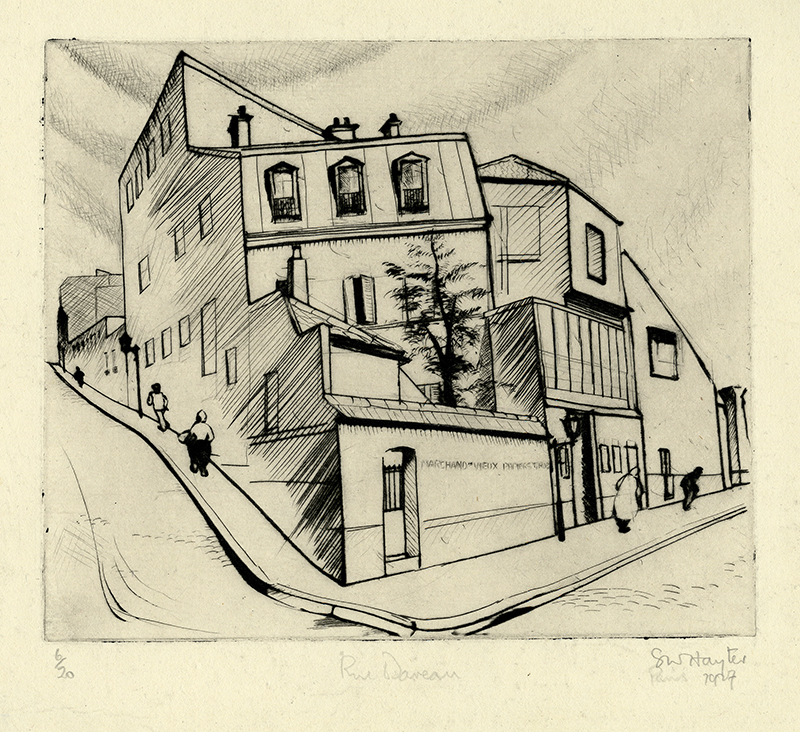Rue Dareau is a drypoint created in 1927 by Stanley William Hayter. It is pencil signed and titled and further inscribed Paris 1927 under the signature. Rue Dareau was printed by the artist on Montval wove paper and the reference is Black and Morehead 24. This impression is editioned 6/20 and the highest recorded number for this edition is 18/20.
Rue Dareau is the seventh Parisian street scene created by Hayter during his first two years in Paris. While Rue Dareau is a drypoint, Hayter also produced urban scenes in lithography and woodcut. Désirée Morehead addressed these street scenes on pages 18 and 19 in The Prints of Stanley William Hayter: “Hayter enjoyed Paris and the company of artists, writers and photographers. As is apparent in the prints, he was also intrigued by the peculiar geometry of French architecture with its strictly planned apartment houses juxtaposed with cottage-type buildings of an entirely different character. He was fascinated by buildings which had been isolated by the removal of surrounding edifices, seeming to taper on one side to a thin triangular slice. The fairly conventional execution of the street scenes Rue des Plantes, Rue Méchain, Rue du Château, Rue du Moulin-Vert, Boulevard Pasteur, and Rue Dareau is more than offset by the dramatic leaning lines of the taller buildings. In all of these, except perhaps Rue Méchain, there is a brooding and watchful atmosphere which lifts the images above mere topographical illustration. This series of Paris street scenes culminates in the Paysages urbains portfolio of 1930.”
Stanley W. Hayter was born in Hackney, England in 1901. After three years working as a chemist in the oil fields of Iran, he enrolled in the Académie Julian in Paris in 1926. There he met the engraver Joseph Hecht and began to merge chemistry with printmaking.
In 1927, Hayter founded Atelier 17, an experimental graphic arts workshop in Paris that played a central role in the revival of the print as an independent art form. European artists came to work with him and ideas flowed freely. Hayter left Paris in late 1939 as war closed in on the city.
Hayter opened Atelier 17 in 1940 in New York and the studio became a melting pot of European artists who had fled the war and American artists, many who had worked in the printmaking section of the WPA. The emphasis was on experimental color printing, including the use of viscosity printing and offset color using screenprint, stencil and woodcut.
Hayter returned to Paris in 1950 and reopened Atelier 17, attracting many artists from Asia. He continued to experiment with color printing, including the use of Flowmaster pens, incongruous and fluorescent colors, and flowing, interwoven patterns. With an unrivaled knowledge of the technicalities of printmaking, Hayter authored two major books, New Ways of Gravure and About Prints.



